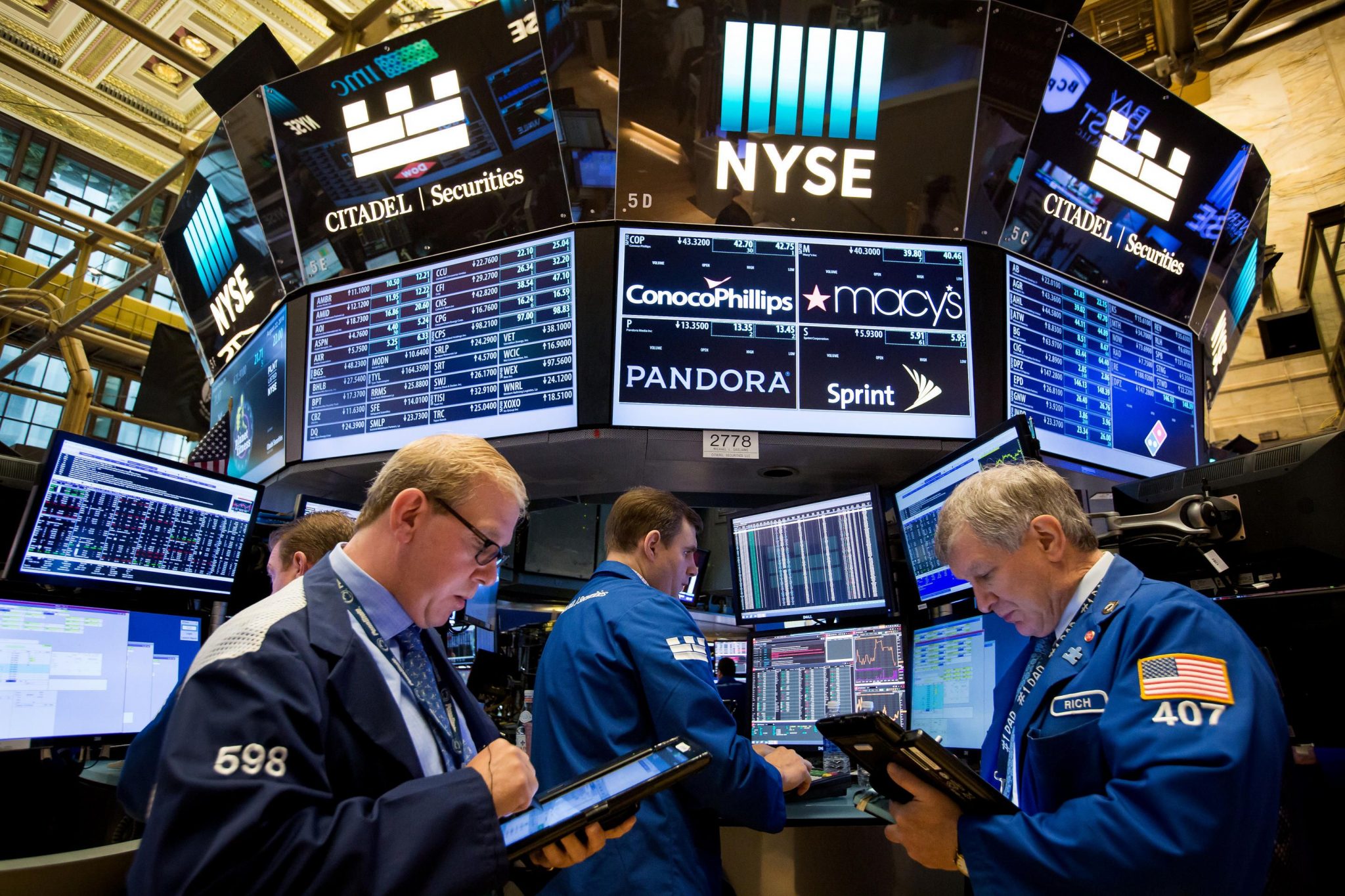The Dow Jones Industrial Average and S&P 500 fell sharply on Tuesday and turned negative for the year as a decline in Target shares pressured retailers, while some of the most popular tech shares dropped again.
The 30-stock Dow dropped 551.80 points to 24,465.64 and the S&P 500 plunged 1.8 percent to close at 2,641.89. The Dow and S&P 500 were up 1.2 percent and 0.6 percent, respectively, for 2018 entering Tuesday.
Meanwhile, the Nasdaq Composite also dropped 1.7 percent to 6,908.82 but managed to hang on to a slight gain for 2018. Tuesday’s declines come after the Dow dropped 395 points on Monday.
U.S. stocks hit their lows of the day after Doubleline Capital founder Jeffrey Gundlach said stocks are still too expensive, adding there has not been a “panic low” yet. The Dow was down nearly 650 points at its session low, while the S&P 500 and Nasdaq had both dropped more than 2 percent.
Target fell 10.5 percent after reporting weaker-than-expected earnings for the previous quarter. The company also posted lighter-than-forecast same-store sales, which is a key metric for retailers.
The decline sent the SPDR S&P Retail ETF (XRT) down 3.4 percent. Kohl’s, L Brands and Macy’s, which are also in the XRT, fell 9.2 percent, 17.7 percent and 3.4 percent, respectively. Retail’s steep decline comes ahead of the holiday shopping season, a critical period of the year for these companies.
“This looks like lingering worries about what triggered the October decline. That’s worries about an economic slowdown,” said Craig Callahan, president at Icon Funds. “I think these people are wrong, but they’re in control at this time.”
Stocks fell sharply last month amid heightened concerns about rising interest rates, slowing economic growth and global trade tensions.
The S&P 500 fell 6.9 percent in October while the Dow lost 5.1 percent of its value. At current levels, the Dow is barely above the closing low during the October sell-off and 1.4 percent from its intraday low hit during the market turmoil last month.
Tuesday’s decline came a day after members of the popular “FAANG” trade- Facebook, Amazon, Apple, Netflix, and Google-parent Alphabet- all closed in a bear market, down more than 20 percent from their 52-week highs.
The S&P 500 and Nasdaq dropped 1.7 percent and 3 percent, respectively, on Monday while the Dow fell 1.4 percent.
Apple has been leading the charge lower for FAANG stocks as investors worry sales for the company’s flagship product, the iPhone, will slow down.
Most recently, Goldman Sachs slashed its price target on Apple on Tuesday, noting that “in addition to weakness in demand for Apple’s products in China … it also looks like the balance of price and features in the iPhone XR may not have been well-received.”
“Short term, unexpected weakness in the tech sector could have a significant impact on the global economy, adding to what already looks like a soggier macro environment,” said Dario Perkins, managing director of global macro at TS Lombard, in a note. “Additional retrenchment in the FAANGs could also undermine the broader US stock market.”
FAANG stocks traded in a wide range Tuesday. The group of stocks started the day trading down sharply, but they managed to recover most of their losses.
Facebook and Alphabet notched slight gains after their initial decline, while Amazon and Netflix closed about 1 percent lower. Apple closed 4.8 percent lower.
The major indexes were also under pressure as steep losses in crude pushed down the energy sector. West Texas Intermediate futures plunged more than 6 percent on Tuesday amid worries about rising supply across the globe. Crude’s plunge sent the S&P 500 energy sector down 3.3 percent, by far the worst-performer in the index.
“A lot of people are getting blown up there,” said Larry Benedict, CEO and founder of The Opportunistic Trader. “A lot of people were in this long oil, short natural gas trade that had been working for some time. Now, I think we’re seeing some liquidation.”
Boeing shares fell 1 percent Tuesday after the company canceled a conference call with airlines to discuss the systems on the 737 MAX model. Last month, a 737 MAX crashed and killed all 189 people on board.
Source: CNBC
